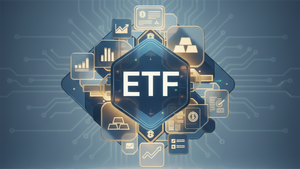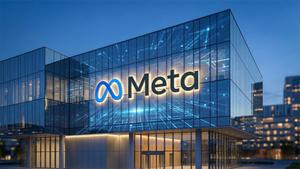
The healthcare industry is currently experiencing a transformative "golden age," a period marked by an unprecedented surge in scientific breakthroughs and technological advancements. This era is fundamentally altering the landscape of medical treatment and diagnostics, promising a future of more personalized, precise, and preventive medicine. At the forefront of this revolution are three powerful innovations: glucagon-like peptide-1 (GLP-1) obesity drugs, artificial intelligence (AI)-led cancer screening, and advanced robotic surgeries. These developments are not just improving patient outcomes; they are creating seismic shifts in financial markets, redefining corporate strategies, and sparking intense investor interest across pharmaceuticals, medical technology, and digital health.
The immediate implications for the market are profound. Public companies deeply entrenched in these innovative fields are witnessing significant shifts in valuation and market position, while those relying on older paradigms face the imperative to adapt or risk being left behind. This rapid evolution underscores a dynamic investment environment where understanding the nuances of these groundbreaking technologies is paramount to identifying both immense opportunities and potential pitfalls.
A Trifecta of Transformation: Why These Innovations Matter
This "golden age" is characterized by a convergence of scientific understanding, technological prowess, and substantial investment, leading to paradigm shifts in patient care.
The rise of GLP-1 obesity drugs represents one of the most significant pharmaceutical breakthroughs in decades. These drugs, such as semaglutide (marketed as Ozempic and Wegovy by Novo Nordisk (NYSE: NVO)) and tirzepatide (Mounjaro and Zepbound by Eli Lilly (NYSE: LLY)), mimic a natural gut hormone, leading to significant weight loss and improved metabolic health. Their mechanism involves stimulating insulin release, suppressing glucagon, slowing gastric emptying, and crucially, reducing appetite. Beyond just weight management, these drugs have demonstrated benefits in reducing cardiovascular risks and are being explored for a host of other conditions, including chronic kidney disease, heart failure, and even Alzheimer's. The market for GLP-1 drugs is projected to reach well over $100 billion by 2030, fundamentally reshaping how chronic diseases like obesity and type 2 diabetes are treated and managed, and creating a ripple effect across pharmaceutical, food, and medical device industries.
AI-led cancer screening is revolutionizing early detection, diagnosis, and personalized treatment of various cancers. Leveraging sophisticated machine learning and deep learning algorithms, AI can analyze vast amounts of data from medical images (like mammograms, CT scans, and pathology slides), genomic profiles, and patient histories. This allows for the identification of subtle abnormalities and patterns often imperceptible to the human eye, leading to higher accuracy, reduced false positives and negatives, and significantly faster diagnoses. Companies like PathAI and Paige are pioneering AI-powered pathology solutions, while tech giants such as Google Health are developing models that can detect breast cancer from mammograms with expert-level accuracy. AI's ability to integrate multimodal data is paving the way for highly personalized risk assessments and treatment plans, offering a new frontier in the fight against cancer.
Finally, robotic surgeries have moved from a futuristic concept to a cornerstone of modern medical practice. Systems like the da Vinci Surgical System by Intuitive Surgical (NASDAQ: ISRG) and the Mako Robotic-Arm by Stryker (NYSE: SYK) enhance a surgeon's capabilities, offering unparalleled precision, dexterity, and control during minimally invasive procedures. These systems translate a surgeon's hand movements into micro-movements of tiny instruments inside the patient, often with enhanced visualization and tremor filtration. The benefits are substantial: smaller incisions, reduced pain, faster recovery times, less blood loss, and lower complication rates for patients. Ongoing innovations include miniaturization, haptic feedback (allowing surgeons to "feel" tissue), and increasing integration with AI for real-time surgical guidance, further pushing the boundaries of what is possible in the operating room.
The Shifting Sands: Winners and Losers in the New Healthcare Economy
This rapid wave of innovation is creating clear winners and posing existential challenges for others, reshaping investment portfolios and corporate strategies across the healthcare landscape and beyond.
The undisputed winners in the GLP-1 drug space are the pharmaceutical giants at the forefront of development and manufacturing. Novo Nordisk (NYSE: NVO), with its blockbusters Ozempic and Wegovy, and Eli Lilly (NYSE: LLY), with Mounjaro and Zepbound, have seen their market capitalizations soar, becoming some of the most valuable pharmaceutical companies globally. Their ongoing research into next-generation multi-agonists and oral formulations positions them for continued dominance, though increased competition from pipeline players like Pfizer (NYSE: PFE), Roche (OTCMKTS: RHHBY), and Amgen (NASDAQ: AMGN) is expected. Pharmaceutical distributors like Cardinal Health (NYSE: CAH), Cencora (NYSE: COR), and McKesson (NYSE: MCK) also benefit from the sheer volume of these highly demanded drugs.
In AI-led cancer screening, specialized AI diagnostics companies are emerging as key winners. Companies like PathAI and Paige, specializing in computational pathology, are revolutionizing diagnostic accuracy. Major medical technology firms such as Siemens Healthineers (ETR: SHL) and GE HealthCare (NASDAQ: GEHC) are deeply integrating AI into their imaging and diagnostic platforms. Additionally, genomic and molecular diagnostics companies like Tempus and Freenome, leveraging AI for liquid biopsies, are poised for significant growth. Even technology providers like NVIDIA (NASDAQ: NVDA), whose powerful GPUs are essential for training complex AI models, are indirect but crucial beneficiaries.
For robotic surgeries, Intuitive Surgical (NASDAQ: ISRG) remains the dominant winner with its da Vinci system, benefiting from its established market share and recurring revenue from instruments and services. However, competition is intensifying, with Stryker (NYSE: SYK) leading in orthopedic robotics with its Mako system, and Medtronic (NYSE: MDT) with its Hugo RAS system, and Johnson & Johnson (NYSE: JNJ) actively developing its Ottava system. Companies like Asensus Surgical (NYSEAMERICAN: ASXC) are also making strides with augmented intelligence platforms.
Conversely, there are potential losers. Traditional weight loss program companies, such as WeightWatchers (NASDAQ: WW), have faced significant headwinds, with some even filing for bankruptcy due to the effectiveness of GLP-1 drugs. Certain medical device manufacturers, particularly those reliant on treating obesity-related comorbidities like sleep apnea or bariatric surgery, could see reduced demand in the long term, though some orthopedic companies like Zimmer Biomet (NYSE: ZBH) argue that GLP-1s might make more patients eligible for joint replacements. The food and beverage industry, especially fast food and packaged goods, is also anticipated to feel the impact as GLP-1 users report reduced appetite and a shift away from high-calorie foods. In diagnostics, traditional laboratories and imaging centers that fail to adopt AI-powered solutions risk becoming less competitive.
Industry Evolution and Broader Societal Echoes
These innovations are not isolated advancements; they represent a convergence of broader industry trends, creating significant ripple effects and demanding adaptive regulatory frameworks.
The "golden age" aligns with several overarching trends: the rise of personalized medicine, the digital health transformation accelerated by the pandemic, and a growing emphasis on value-based care. GLP-1 drugs are pushing healthcare towards a more proactive and preventive model for chronic diseases, potentially reducing long-term healthcare costs by billions of dollars related to obesity and its complications. This shift, however, necessitates a re-evaluation of how health insurers cover such expensive, long-term medications, a significant regulatory and policy challenge.
AI-led cancer screening is transforming diagnostic workflows, allowing radiologists and pathologists to focus on more complex cases while AI handles routine screenings. This can alleviate workforce shortages and democratize access to high-quality diagnostics, especially in underserved areas. However, it also raises critical questions about data privacy, algorithmic bias, and the ethical implications of AI in clinical decision-making. Regulators globally are grappling with establishing clear guidelines for AI deployment to ensure safety, efficacy, and accountability.
Robotic surgeries exemplify the trend towards minimally invasive procedures, offering enhanced precision and improved patient recovery. The high upfront cost of these systems, however, poses a challenge for broader adoption, raising concerns about equitable access. Regulatory bodies must ensure robust training and safety standards for these complex technologies, and policy discussions are ongoing regarding their cost-effectiveness compared to traditional methods. Historically, the advent of antibiotics, statins, and laparoscopic surgery all created similar disruptive periods, requiring significant adaptation from the medical community, new policy frameworks, and overcoming challenges related to cost, access, and societal acceptance. These precedents suggest a similar, albeit accelerated, evolutionary path for today's innovations.
The Road Ahead: Navigating the Future of Healthcare Innovation
The trajectory of these transformative technologies points towards a future where healthcare is more precise, preventive, and patient-centric, though the path will be marked by both immense opportunities and significant challenges.
In the short term (1-3 years), for GLP-1 drugs, we can anticipate expanded indications for existing medications and the launch of new, potentially more effective, and orally administered formulations. The market will see increased competition as more pharmaceutical companies enter the space, potentially leading to price erosion but also broader accessibility. Companies will need to optimize their manufacturing and supply chains to meet global demand and strategically navigate complex pricing and reimbursement landscapes. For AI-led cancer screening, expect continued integration of AI into routine diagnostic workflows, particularly in imaging analysis and predictive risk assessment. Regulatory approvals for these tools will accelerate, and their efficiency will help address clinician workload. In robotic surgeries, new generations of systems with enhanced features like improved haptic feedback and miniaturized instruments will broaden their application across more specialties.
Looking long-term (3-10+ years), GLP-1 drugs could evolve into next-generation multi-agonists, offering even greater weight loss and cardiometabolic benefits, with personalized treatment approaches becoming standard. For AI-led cancer screening, the integration of multi-omics data with AI will enable highly personalized screening protocols, and AI will be crucial in analyzing liquid biopsies for multi-cancer detection. We may also see the development of semi-autonomous AI systems providing highly reliable diagnostic probabilities. In robotic surgeries, increased automation of routine tasks is on the horizon, with telesurgery potentially expanding access to specialized care globally. Micro-robotics could even enable interventions at the cellular level.
Companies across these sectors will need strategic pivots, including heavy R&D investment in next-gen technologies, robust data strategies for AI, and a focus on cost reduction and accessibility for robotic systems. Emerging markets, with their growing disease burdens, present significant opportunities, but also challenges related to infrastructure, skilled personnel, and regulatory complexities.
Conclusion: A Transformative Era with Enduring Impact
The "golden age" of healthcare innovation, spearheaded by GLP-1 drugs, AI-led cancer screening, and robotic surgeries, represents a monumental shift in medical science and practice. These breakthroughs are not just incremental improvements; they are fundamentally reshaping how we approach chronic diseases, detect life-threatening conditions, and perform intricate medical procedures. The lasting impact will be a healthcare system that is more efficient, precise, and ultimately, more effective in extending healthy lifespans and improving quality of life. However, successfully navigating this era will hinge on addressing critical challenges related to cost, equitable access, regulatory complexities, and ethical considerations surrounding data and automation.
For investors, the coming months will be crucial. Watch for clinical trial readouts for new GLP-1 indications, especially in areas like sleep apnea and Alzheimer's, as well as developments in insurance coverage and the entry of generics that could reshape market dynamics for Novo Nordisk (NYSE: NVO) and Eli Lilly (NYSE: LLY). In AI, monitor FDA clearances for new AI-powered diagnostic tools and the performance of companies like PathAI and Paige in real-world settings. For robotics, observe technological advancements in miniaturization, haptic feedback, and AI integration from key players like Intuitive Surgical (NASDAQ: ISRG), Medtronic (NYSE: MDT), and Stryker (NYSE: SYK), alongside their expansion into new surgical specialties and ambulatory surgical centers. Astute observation of these factors will be key to harnessing the immense potential of this transformative period in healthcare.





